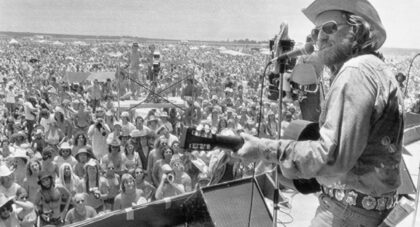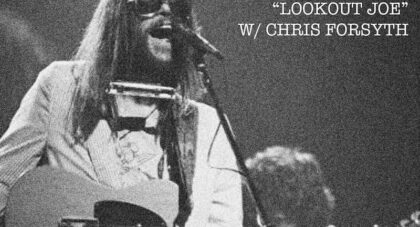In the summer of 2007 the documentary Who Is Harry Nilsson (And Why Is Everybody Talkin' About Him?) saw a limited engagement (read: single viewing) at the Egyptian Theatre in Hollywood. I was fortunate to be in attendance, and for the next three years kept an eye out for a wider release and/or DVD distribution. In 2010 both of these things happened. Below is our thoroughly enlightening conversation with the doc's filmmaker John Scheinfeld.
Aquarium Drunkard: I know this film had been underway for years and you had been working on other projects throughout (The U.S. vs. John Lennon, etc). What was the impetus of the project; how did it initially get its start?
John Scheinfeld: I’d been a fan of Harry’s music since my freshman year at Oberlin College when I played his music on my morning radio show. A few years ago Lee Blackman, Harry’s good friend and long-time attorney, had approached me about doing a documentary about Harry. I was intrigued, but knew very little about his life. So I started researching and the more I read, the more I became convinced that this was a remarkable story that had to be told. It has an extraordinary richness and texture — Harry’s career was as complex, exhilarating, maddening and inspiring as the man himself — and I felt it would make for a powerful and highly emotional film.
AD: I caught a screening a few summers ago here in LA at the Egyptian Theater. The audience ate it up. Were there many screenings of the documentary prior to 2010?
John Scheinfeld: We screened a work-in-progress version of the film at the Santa Barbara, Seattle and Mods and Rockers film festivals to great acclaim in 2006. Journalists, reporters, music writers and critics were poised to write reviews and feature articles about the film and Harry. The nearly 10,000 people on the movie’s MySpace page chatted about the film endlessly, clamoring to see it. However, issues involving the use of Harry’s master recordings in the movie that the filmmakers had no reason to anticipate emerged unexpectedly and delayed release of the film. Happily, everything was finally resolved, but several years had been lost. I contacted many distributors in search of a company that would be as passionate about the film as everyone involved in making it. And then I connected with Richard Lorber of Lorber Films (now Kino Lorber). Richard loved the film and had no intention of letting anyone else put it into the marketplace. A deal was struck and the film premiered at the Cinema Village in New York and eventually was seen in theaters across the country.
AD: In terms of the film getting a wider release, what were the major obstacles you ran into?
John Scheinfeld: The major obstacle was screen time. Meaning that theaters are booked months and months ahead and documentaries are in not as much demand as narrative films. So it was a question of getting theater bookers to believe in the film. This was accomplished through Lorber lobbying the theaters as well as the bookers seeing the box office figures from New York and LA as well as the overwhelmingly positive reviews it received. We also had a short window between when theaters would play it and the release of the DVD (we didn’t want to miss Christmas 2010) so that made it even tougher.
+ Continue Reading After The Jump...
Only the good shit. Aquarium Drunkard is powered by its patrons. Keep the servers humming and help us continue doing it by pledging your support.
To continue reading, become a member or log in.


